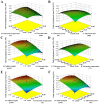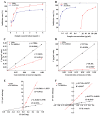Lab Scale Extracted Conditions of Polyphenols from Thinned Peach Fruit Have Antioxidant, Hypoglycemic, and Hypolipidemic Properties
- PMID: 35010225
- PMCID: PMC8750482
- DOI: 10.3390/foods11010099
Lab Scale Extracted Conditions of Polyphenols from Thinned Peach Fruit Have Antioxidant, Hypoglycemic, and Hypolipidemic Properties
Abstract
Thinned peach polyphenols (TPPs) were extracted by ultrasonic disruption and purified using macroporous resin. Optimized extraction conditions resulted in a TPPs yield of 1.59 ± 0.02 mg GAE/g FW, and optimized purification conditions resulted in a purity of 43.86% with NKA-9 resin. TPPs composition was analyzed by UPLC-ESI-QTOF-MS/MS; chlorogenic acid, catechin, and neochlorogenic acid were the most abundant compounds in thinned peaches. Purified TPPs exhibited scavenging activity on DPPH, ABTS, hydroxyl radical, and FRAP. TPPs inhibited α-amylase and α-glucosidase by competitive and noncompetitive reversible inhibition, respectively. TPPs also exhibited a higher binding capacity for bile acids than cholestyramine. In summary, TPPs from thinned peaches are potentially valuable because of their high antioxidant, hypoglycemic, and hypolipidemic capacities, and present a new incentive for the comprehensive utilization of thinned peach fruit.
Keywords: UPLC-ESI-QTOF-MS/MS; antioxidation; hypoglycemic; hypolipidemic; polyphenols; thinned peach.
Conflict of interest statement
The authors declare no competing financial interest.
Figures








References
-
- Guo C.T., Bi J.F., Li X., Lyu J., Wu X.Y., Xu Y. Polyphenol metabolic diversity of Chinese peach and nectarine at thinned and ripe stages by UPLC-ESI-Q-TOF-MS combined with multivariate statistical analysis. J. Food Compos. Anal. 2020;90:103502. doi: 10.1016/j.jfca.2020.103502. - DOI
-
- Nasser M., Cheikh H., Hijazi A., Merah O., Rekaby A., Awada R. Phytochemical profile, antioxidant and antitumor activities of green grape juice. Processes. 2020;8:507. doi: 10.3390/pr8050507. - DOI
-
- Zheng H.Z., Kim Y.I., Chung S.K. A profile of physicochemical and antioxidant changes during fruit growth for the utilisation of unripe apples. Food Chem. 2012;131:106–110. doi: 10.1016/j.foodchem.2011.08.038. - DOI
LinkOut - more resources
Full Text Sources
Miscellaneous

